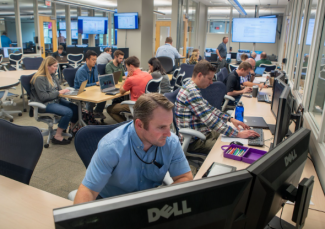DTC plays an important role in model development and evaluation for NOAA and the broader Unified Forecast System (UFS) community. My first interaction with DTC was back in 2010 in the Hazardous Weather Testbed (HWT), when the Method for Object-Based Diagnostic Evaluation (MODE) was being tested for convective applications. MODE is part of DTC’s Model Evaluation Tools (MET) and serves as an innovative alternative to traditional grid-based metrics for model evaluation. MODE offers a unique perspective on evaluating different object attributes (e.g., size, shape, orientation, etc.) and offers the flexibility to match forecast objects to observed objects, which is important for convection-allowing model (CAM) simulations where “close” forecasts (as defined by the user) can be counted as a hit. Another notable DTC project on model evaluation in the HWT was the development of the initial scorecard for CAMs. This project explored the creation of a short list of the most relevant weather parameters used for evaluating CAMs that should be included in a scorecard when comparing model performance (e.g., prior to operational implementation).
DTC also contributes to model development activities for NOAA and the broader community. For example, DTC has made significant contributions to the Common Community Physics Package (CCPP) to ensure that the latest physics parameterization schemes are made available to the UFS community. Staff at DTC have also tested and implemented stochastic physics schemes in legacy modeling systems that enabled these options to be ported into the UFS framework, which is an important step to increasing forecast diversity in a single-model, single-physics ensemble design. Another ongoing project at DTC involves the exploration of initial-condition uncertainty in a CAM ensemble to improve probabilistic forecasts from next-generation UFS systems, like the Rapid Refresh Forecast System (RRFS).
After serving on the DTC Science Advisory Board for the past three years, I see that DTC is well positioned and poised to continue expanding its role in contributing to model evaluation and development activities in NOAA and the UFS community. My experience with the operational side of NOAA suggests that DTC has tremendous potential in assisting with model development, testing, and evaluation of the next-generation operational forecast systems. In my opinion, DTC can expand its role in the research-to-operations space by actively engaging and participating in real-time evaluation activities at other NOAA testbeds, whether that be contributing a model run with physics upgrades or generating verification statistics for next-day evaluation.

